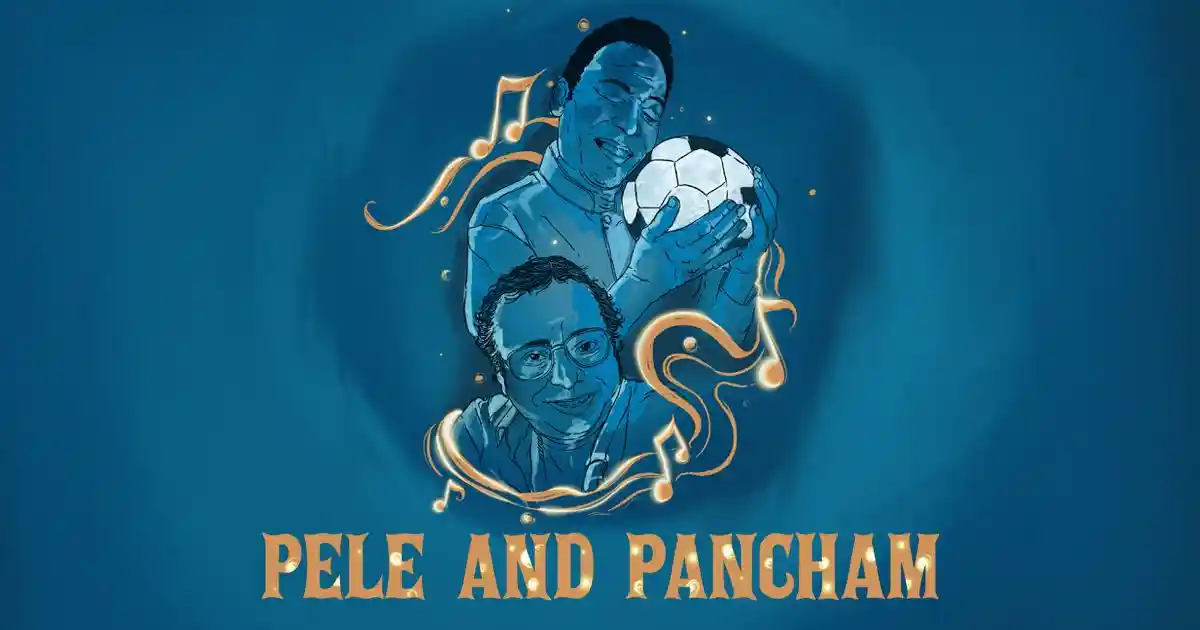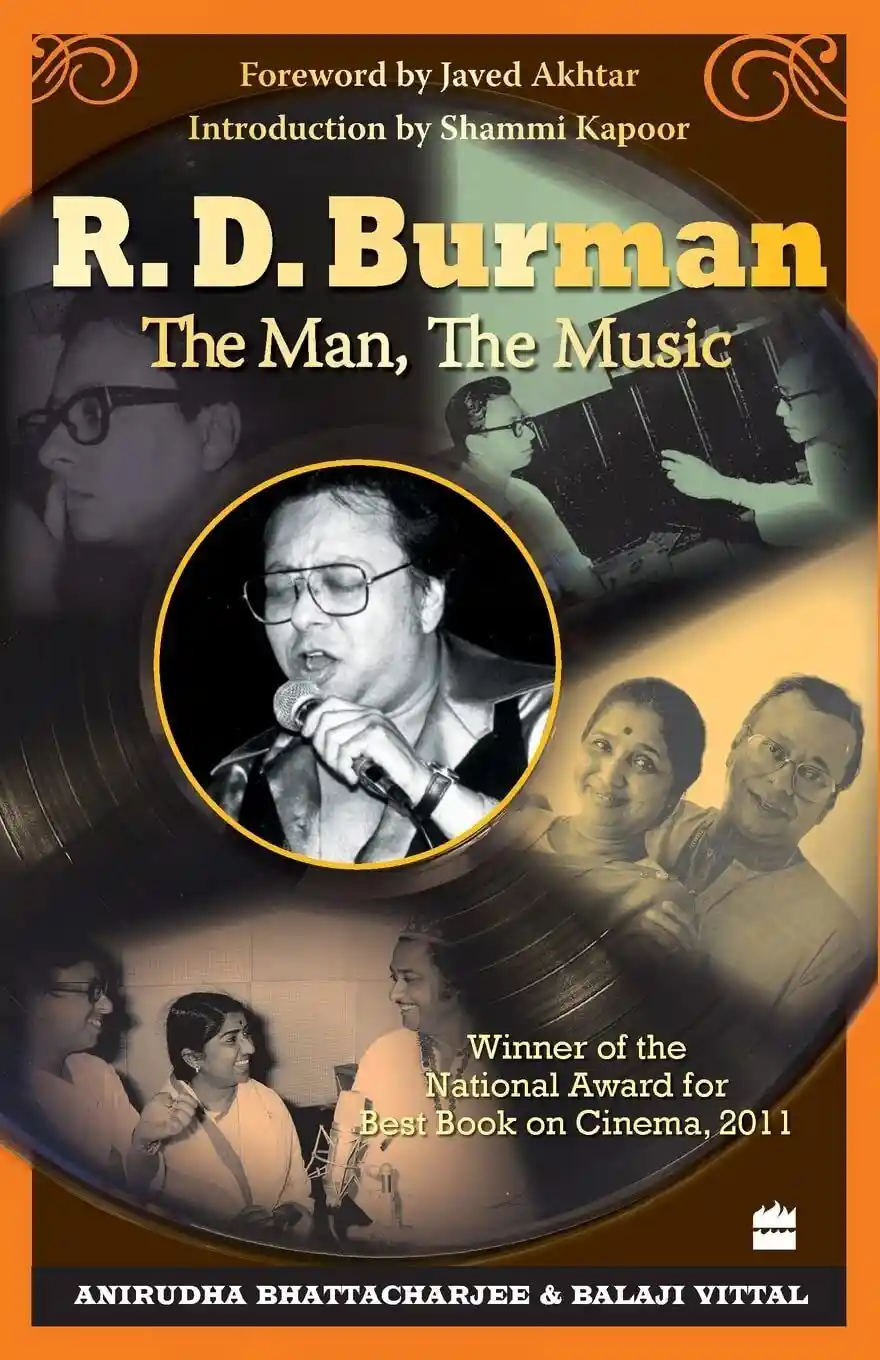Pele and Pancham
Pele and RD Burman were born a little over a year apart. Coming on 4th Jan as it does, the ‘RD Burman Immortality Day’ (his fans justifiably refuse to term it his ‘death anniversary’) this year is too close to the date of the Brazilian football legend’s demise for us to miss the connection between RD Burman (Pancham) and Latin American music.

Pele and Pancham. Illustrated by Anupama: Visual Storyteller at ThisDay
To start with, both Pele and Pancham started their professional careers around the same time. Pele joined Santos in June 1956. And Pancham joined his father as an assistant for Guru Dutt’s Pyaasa (1957) in December 1955. Pancham’s musical sensibilities were predominantly shaped by his love for world music, which included Latin American music (known as Latino music). He took a liking to it for the vibrancy integral to the genre. Also, the hip environment of south Calcutta, where the Dev Burmans resided, inevitably influenced him, with a bias for jazz and Cuban Big Band music.
Bossa Nova, a musical form intrinsic to Brazil, was developed by musician João Gilberto and composer Antonio Carlos Jobim and was lapped up by North American musicians and popular singers. Having debuted as an independent composer in 1961, RD Burman brought Bossa Nova from the beaches of Rio de Janeiro to the studios of Bombay where he simplified the chords and dovetailed it with a pentatonic tune to create a song in Pati Patni (1966), his fourth film. Sung by Asha Bhosle, and picturized on Shashikala playing a seductress, ‘Maar dalega dard-e-jigar’ was not even a modest hit back then. But it had a novel rhythm and meter – legato in the mukhda and staccato in the antara, one of the many innovations and adaptations that would define brand Pancham. By this time, Pele had won two World Cups for his country. Very soon, Bossa Nova would find a place in compositions by other Indian music directors as well. In one of the interludes from the very popular Kalyanji-Anandji composition Mere Desh Ki Dharti from Upkaar (1967), a number that won singer Mahendra Kapoor the National Award, we hear the Bossa Nova.
If the 1960s was the warm-up match with successes like Teesri Manzil (1966) and Padosan (1968), the 1970s was to Pancham what the period 1958-1970 was to Pele. Album after album, Pancham left music lovers awestruck with a heady mix of melody, mixed rhythm patterns, piquant chords, and improvisations. And it included the ‘Brazil’ verve, of course! In the Asha–Kishore duet ‘Nahin nahin abhi nahin’ from Jawani Diwani (1972) Pancham used the structure of Brazilian blues, a flavor more apparent in the notes of the Bengali Puja version sung by Asha Bhonsle, ‘Chokhe chokhe kotha bolo’. What set the song apart was the major scale shift in the third stanza and the application of deep bass lines. Celebrated Brazilian singer Sergio Mendes’ number ‘After Sunrise’ was one of the sources for the Kishore-Asha duet ‘Aaya hoon main tujhko le jaoonga’ from Manoranjan (1974). The opening bars of ‘After Sunrise’ may have also fleetingly inspired the background music of Sholay (1975) in the scene where Thakur arrives home to see the dead bodies of his family members.
Music from territories in the periphery of South America like Puerto Rico and Cuba too played a role in a couple of Pancham’s compositions because, having been Spanish colonies for centuries, their music contained elements of his favourite Latino music. Celebrated Puerto Rican singer Jose Feliciano composition ‘Listen to the pouring rain’ was used in parts for the number ‘Maine tumko chaha pehli baar’ from Double Cross (1974). Two years earlier, Pancham had paid a tribute to Feliciano, one of his very favourite singers, by having Usha Iyer (Uthup) render the Puerto Rican’s English original ‘Listen to the pouring rain’ in Bombay to Goa (1972) – but, arranging it around the Brazilian Bossa Nova rhythm. And of course, Cuba’s most famous contribution to Pancham was their Cha Cha Cha dance in Shalimar (1978). Pancham, as an assistant to his father, had used this phrase in 1962, as part of the prologue (not prelude) to the song Sheeshe ka ho ya pathhar ka dil in Baat Ek Raat Ki (1962).
Pancham loved football. In Gulzar’s own words, ‘You could remove Pancham from neither his harmonium nor from a football match’. Being of north-Eastern origin, the Dev Burmans were life members of the East Bengal Club, one of the two giant football clubs of the Calcutta derby. Now, Calcutta has been predominantly a ‘Brazil City’. So, was Pancham’s fanboy feelings for Brazilian football (and the music that Brazil dances to) one of the other reasons for his getting attracted to that country’s music? Was Gulzar hinting at precisely that when he wrote the lyrics ‘…. woh jo hai na Mr. Pele apna …. Mere saath match ho gaya’ in Gol Maal (1980)?
Who knows…
You can buy the award-winning book here.

R.D. Burman: The Man, The Music by Anirudha Bhattacharjee and Balaji Vittal.


